
Wiggel!
A Flexible
Play System
2022
Wiggel is a flexible play system that uses silicone joints to create wiggly and bouncy structures and shapes. The flexibility introduces an element of problem solving and structural planning to make shapes that
will stand on their own. Their stretchiness also affords the integration of common household objects into a playful context, and introduces a playful way to engage with the environment around you and the things in it.
The modular toy/construction set market is largely dominated by systems with rigid parts (usually plastic or wood). A common, intuitive goal with these sets is to build something recognizable; a house, a rocket ship, a tower, a car, a boat, etc. The rigidity of the parts affords predictability in assembly and handling. How could a non-rigid, flexible system challenge that play mode? What skills can be learned from having to focus on structural integrity and constantly building against gravity? Suppose that direction is abandoned entirely in favor of something eccentric, unpredictable, and downright silly–what sort of play-goals or educational prompts/outcomes could be derived from such a system?
I found inspiration in the material explorations of Design Products Alumni Jane ni Dhulchaointigh and her discovery of the silicone compound that led to the invention of Sugru, a moldable air-drying silicone. Early experiments with a similar formula revealed its potential to be cast in a rigid mold, which I quickly designed, 3D printed, and tested. It was immediately clear to me that this working method was going to be the kind of fun I looked forward to in a Design project.
In developing my process I have iterated molds with improved tolerances and geometries to optimally handle the material. I have also taken more care to make my process produce as little waste as possible, using precision measuring and reusable tools to avoid having to rely on disposable mixing cups and sticks. While the current material is easy enough to handle and cost-effective for prototyping I would like to move to a more sustainable, eco-friendly material, or even explore the potential for biomaterials.
Iterating a new part from conception to first cast takes approximately a day depending on complexity.

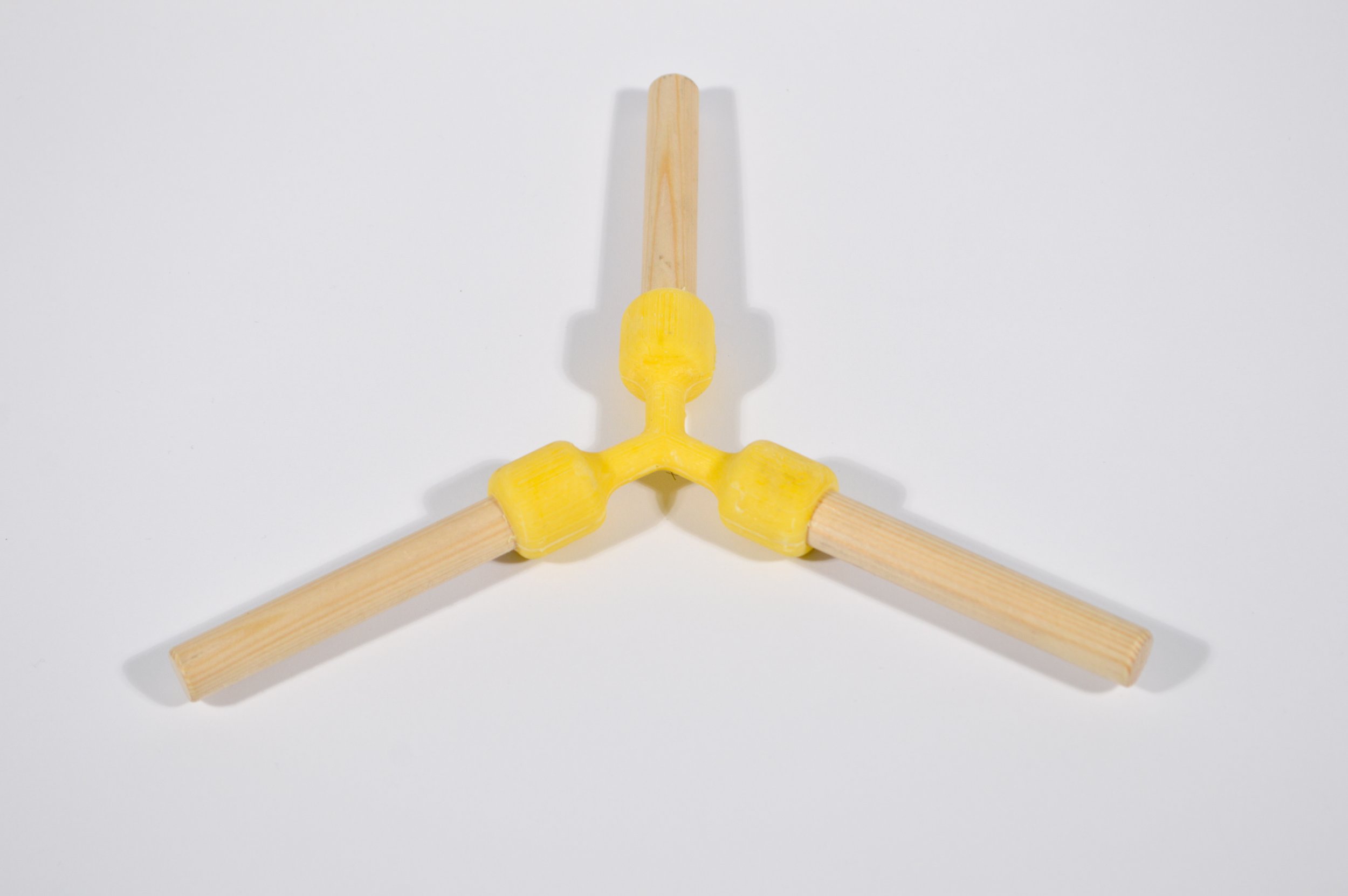

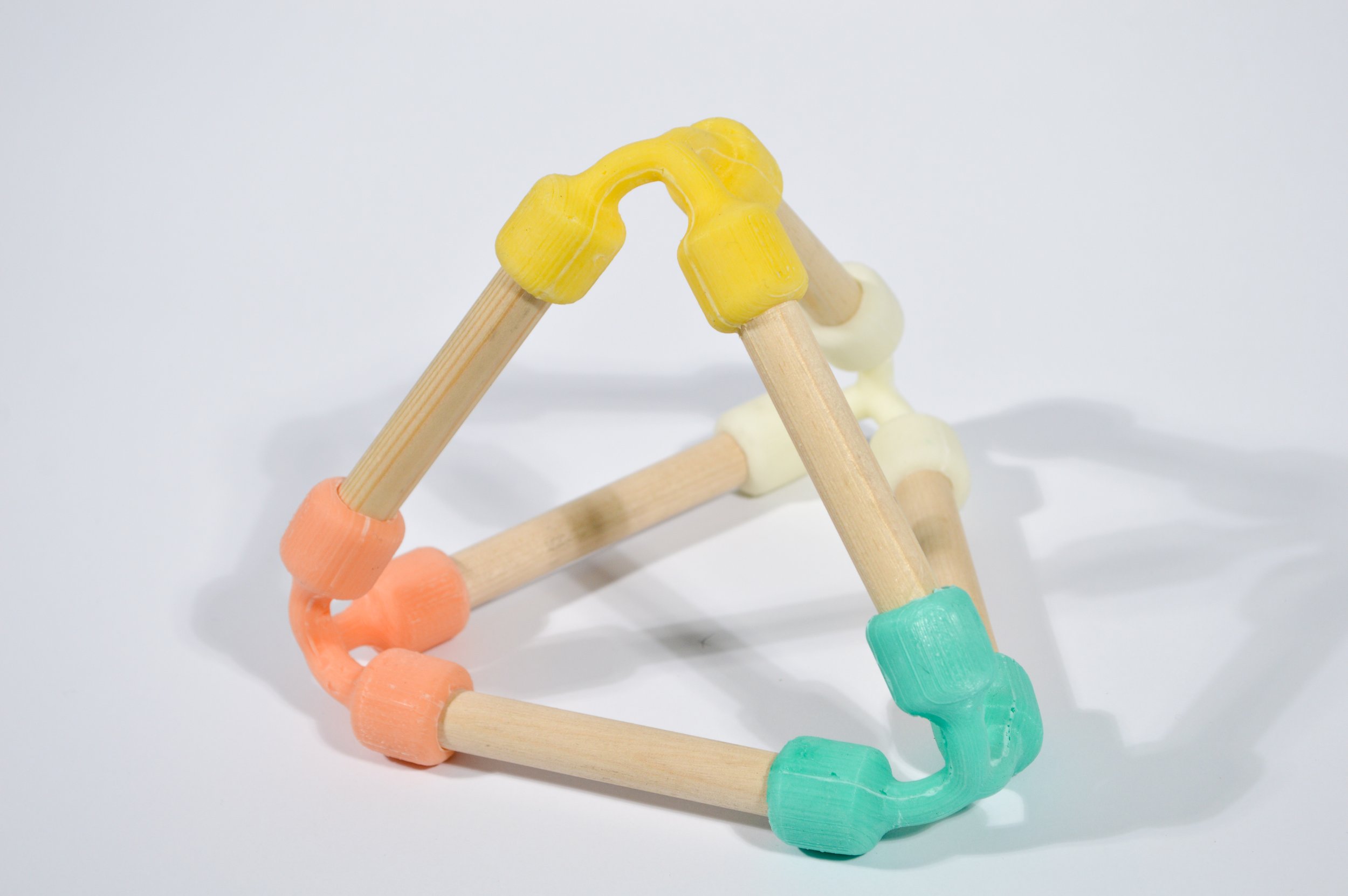
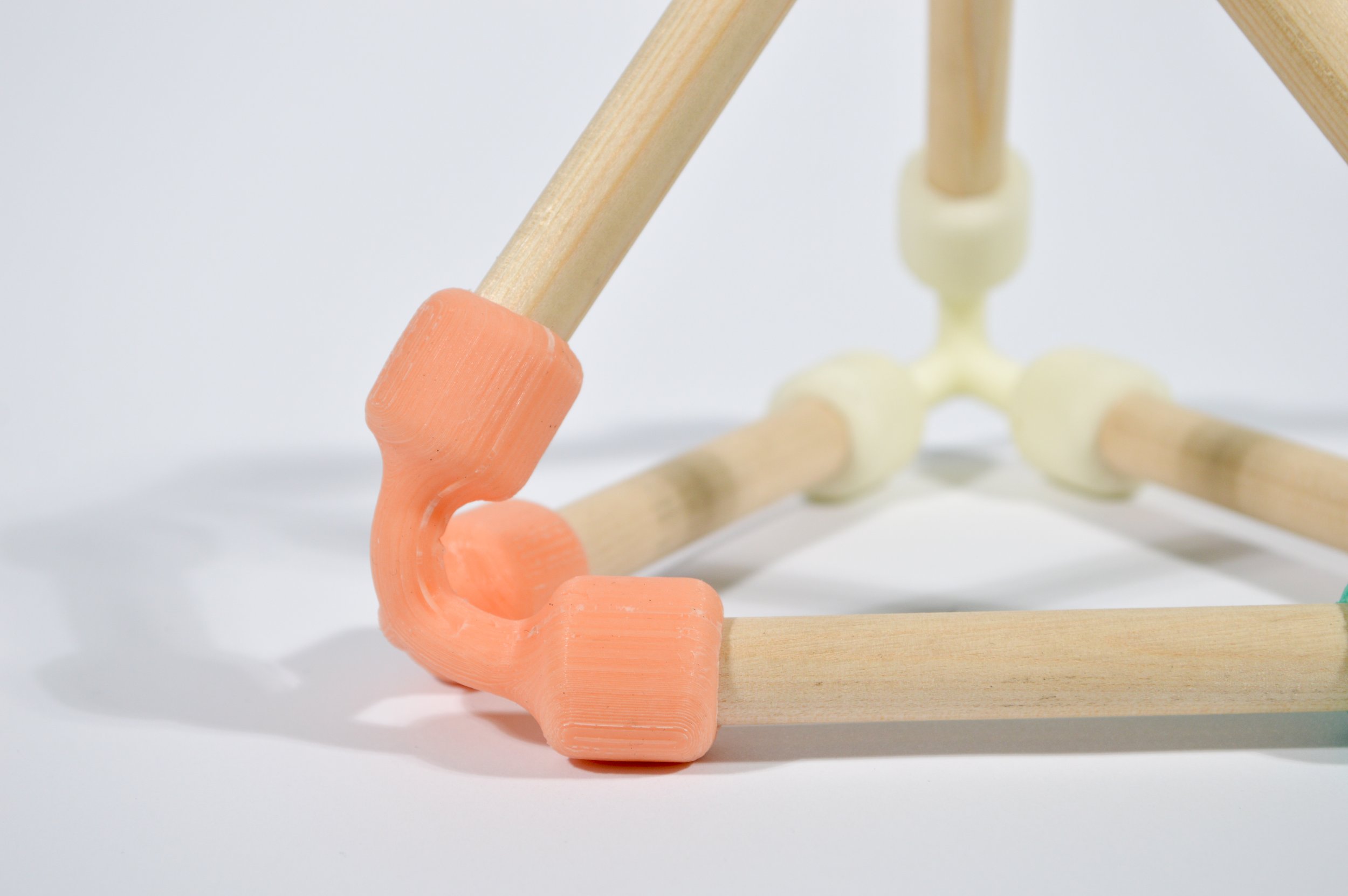
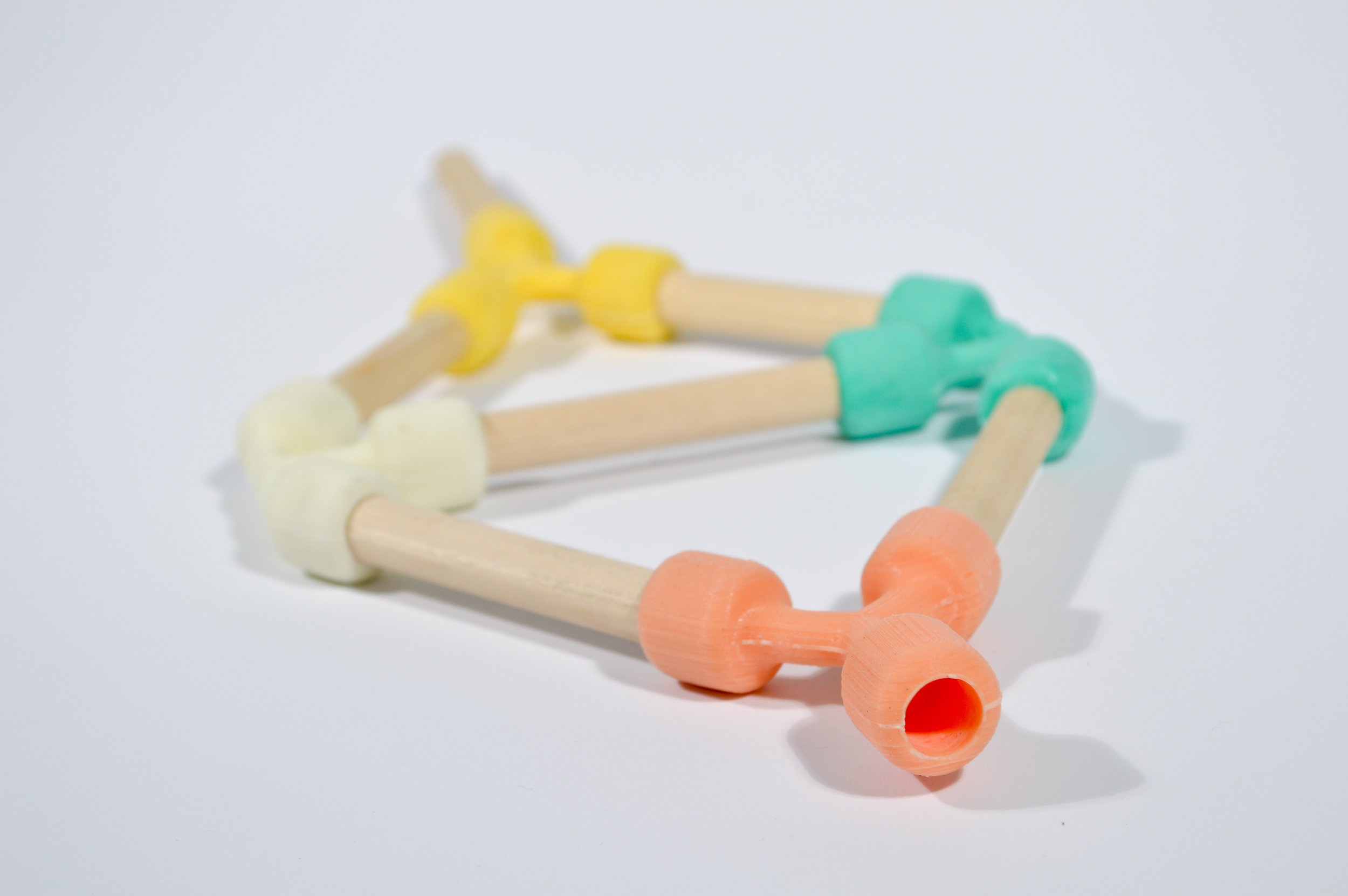
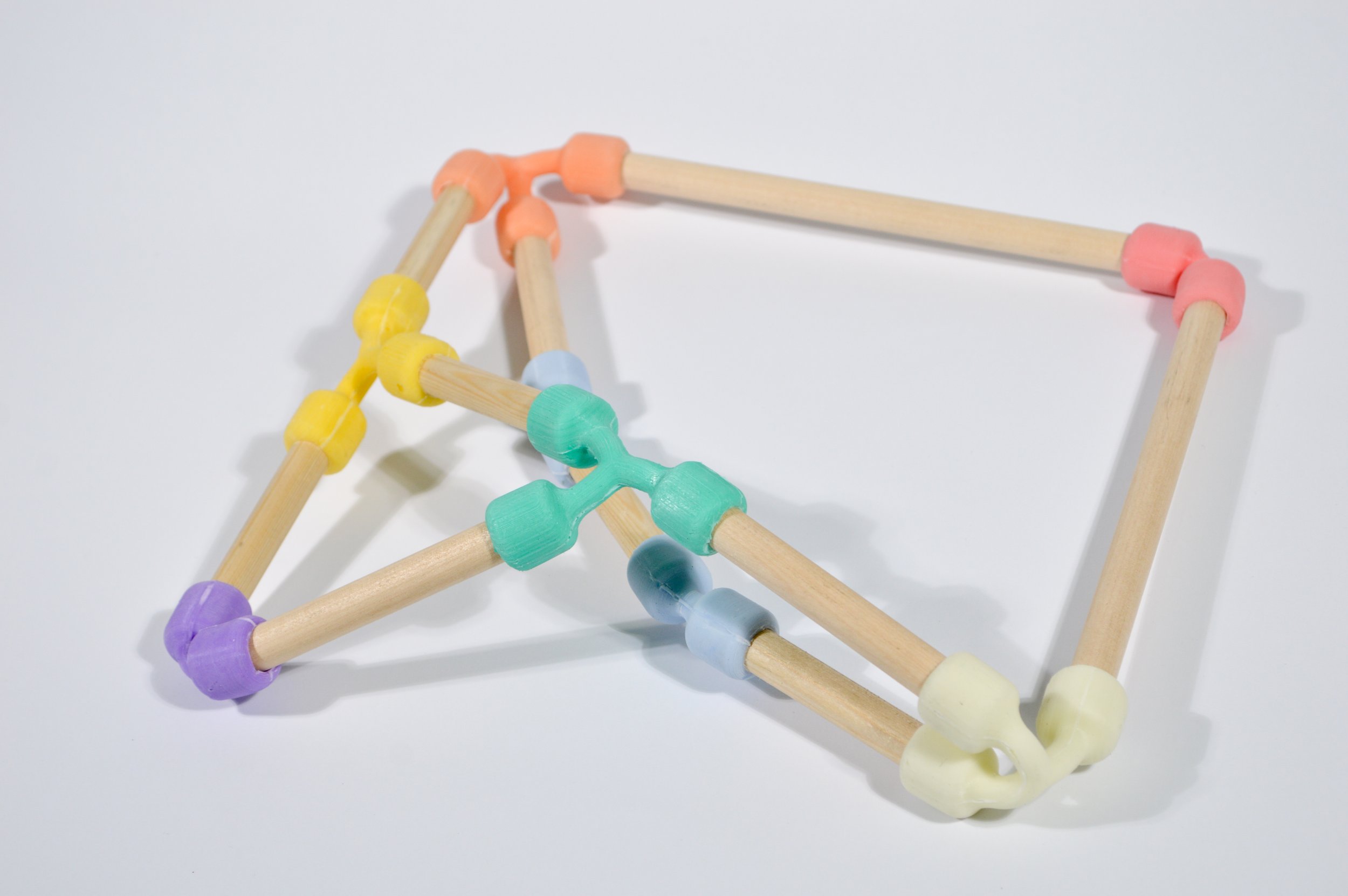



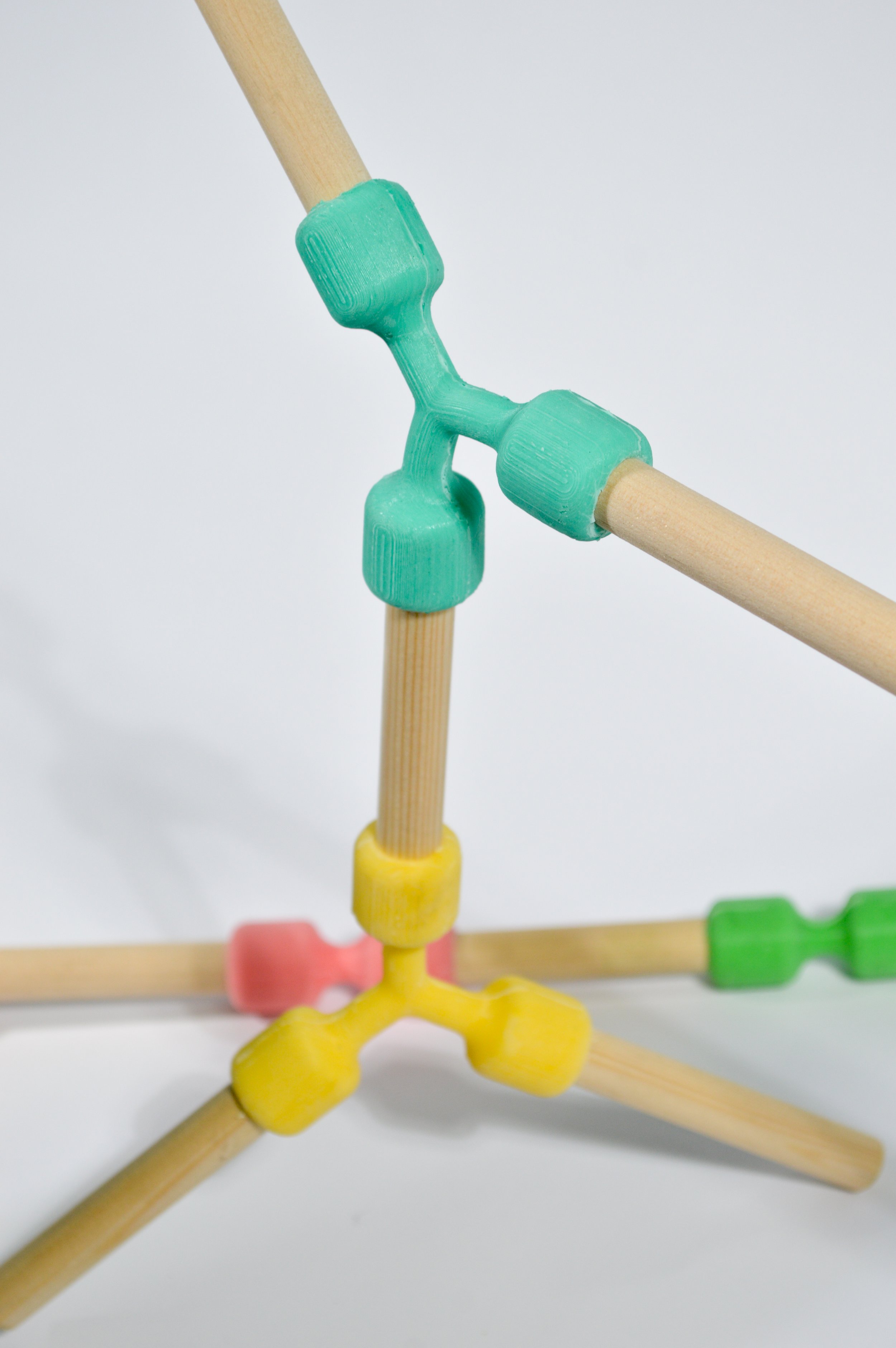
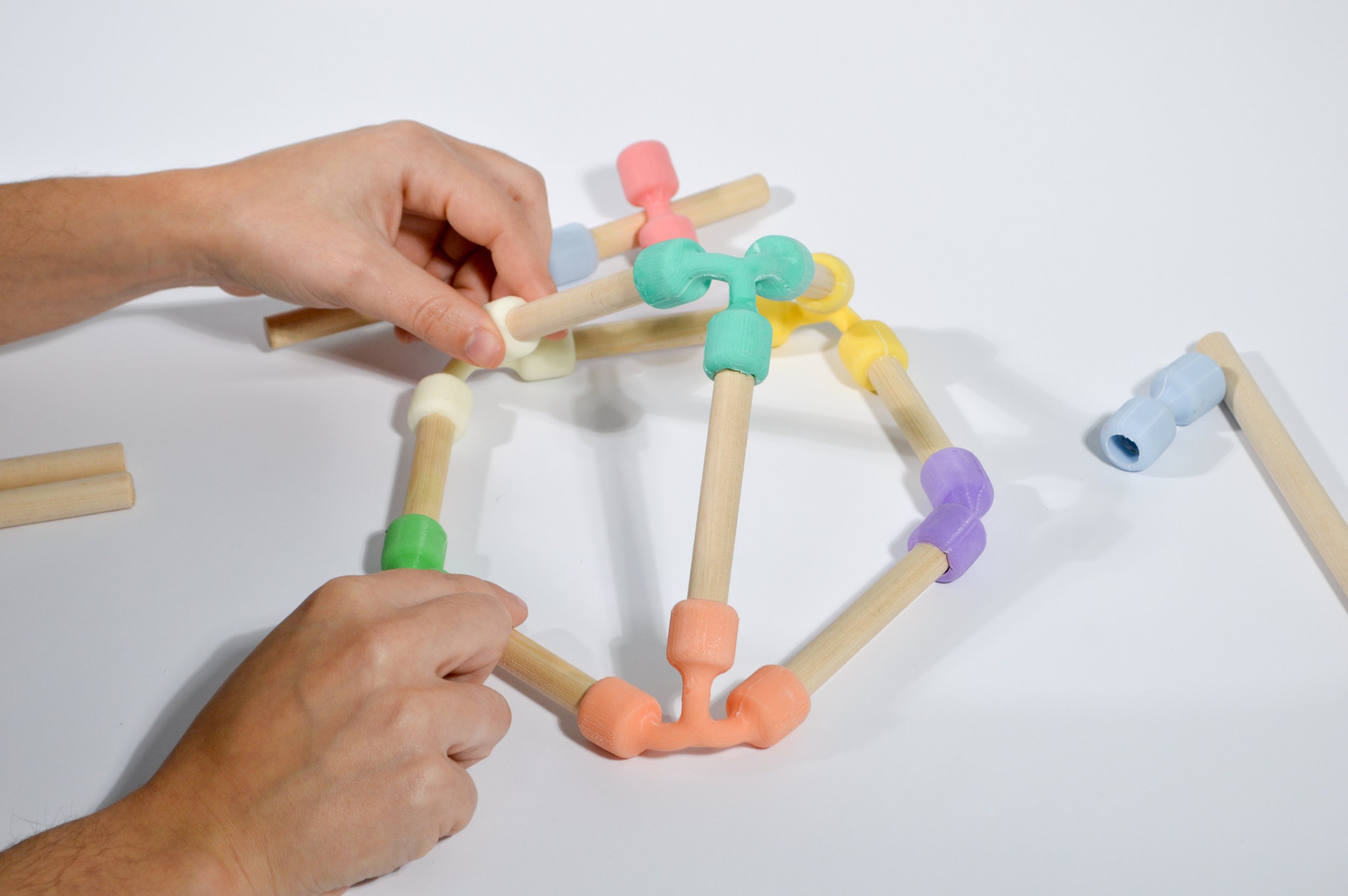








Wiggel has an undeniable element of chaotic charm, and a level of difficulty that requires more problem solving and structural planning than other construction play systems currently on the market. The flexibility of the system makes it necessary to figure out how to reinforce structures so that they can stand on their own–if desired. While currently the system is more-or-less standalone, I hope to develop it to include more modes of child’s play in a domestic or educational setting, and push its versatility so that it could be used with a variety of other toys and play systems.
If you are based in London and interested in having your children participate in a playtest please reach out via email! I consider their input and insights invaluable, and I look forward to unlocking the system’s potential in ways only a child could.




